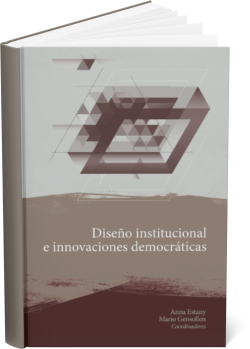INSTITUTIONAL DESIGN AND DEMOCRATIC INNOVATIONS
Synopsis
Institutions shape, constrain, and influence our social lives, making it possible for behavior to be stable, recurrent, repetitive, and patterned in many areas of our private and public lives: family and kinship institutions, educational, economic, political, cultural, and stratification institutions. Now, to speak of institutional design is to speak of an intentional social change, which is challenged by different models of social transformation: accident, evolution, and intention.
Since the end of the last century, Robert E. Goodin has promoted academic and interdisciplinary study of institutional design, and his contributions have been foundational for this discipline in our time. That is why the objective of this book is to reflect on institutions and their reach in the Ibero-American context; on possible new approaches to institutional design to support and strengthen our democracies; on the current challenges facing institutional design and also to pay attention to two areas of design that are often overshadowed in academia: the design of scientific and cultural institutions, and urban design.
Chapters
-
ForewordInstitutions without a soul
-
Introduction
-
I. Approaches and approaches to institutional design
-
Types of design, democratic innovations and international relations
-
Cognitive approach in institutional design
-
Current decisions and future repercussions
-
II. Design of democratic institutions
-
Epistemic design of voting methods: mathematical lessons for democracy
-
Processes of segregation of displaced persons in the Mexican democracy
-
Digital space as public space: keys to digital citizenship
-
The malaise of democracy
-
III. Challenges for institutional design
-
How to Establish Ethical Protocols in the Design of Pandemic Traceability Applications
-
The contours of border design
-
Governance and institutional control for the future of artificial intelligence
-
Does the Anthropocene invite us to ecologically democratize our food?
-
IV. Design of scientific and cultural institutions
-
Science and democracy: science governance models for the design of scientific institutions.
-
The right to science and the diversity of knowledge: bases for institutional design and democratic innovation
-
Redesign the research?
-
Abductive distribution of cultural values: the Alexandria project
-
V. Urban design
-
Design, institutions and participation
-
The architecture of public facilities in Catalonia
-
Interview with Jordi Hereu
-
Interview with Lorena Martínez
-
Epilogue

Downloads
Published
Series
Categories
License

This work is licensed under a Creative Commons Attribution-ShareAlike 4.0 International License.













